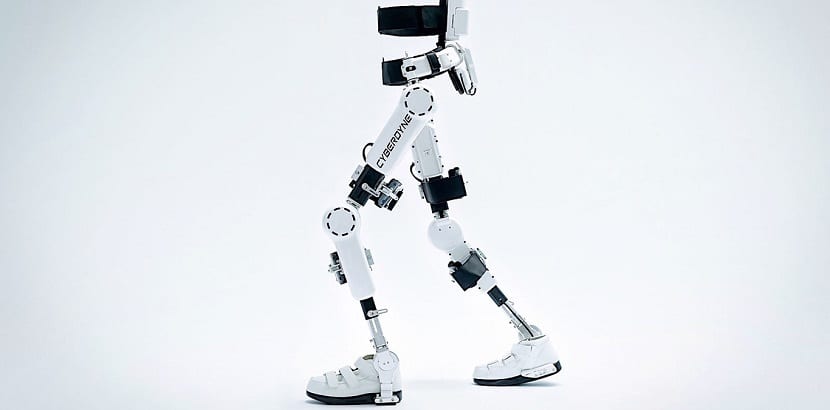
Cyberdyne is a company based in Japan that a few years ago became known worldwide thanks to different projects of robots capable of helping in the tasks of caring for the elderly. To this we must add a project that its managers baptized with the name of Hybrid Assistive Limb o HALWe are talking, as you can see in the image that is located right at the top of this same post, of an exoskeleton that stands out for being technically much more advanced than you can imagine.
Before going into much more detail, remind you that we have really known HAL for many years since Cyberdyne presented a first prototype, at that time it seemed quite advanced, back in 2011. From that time until then, its engineers have been working on perfecting it in terms of real functionality that it can offer as well as adapting it to get the authorities to give the company the green light so that it can begin to be commercialized, something that has not happened. until these days.
Get to know HAL a little better, an exoskeleton that you can control with your mind
As Cyberdyne tells on its official website, apparently the idea behind the creation of HAL, in its beginnings, was very different from the project we know today since this exoskeleton was literally projected as a platform that could be used in tasks where the use of force was a priority. As you can see, this approach, at some point in its development, radically changed since the project managers decided that it could be much more interesting to offer an exoskeleton that would be useful for patients with injuries to their spinal cord.
If we focus on what HAL, the Cyberdyne exoskeleton, can offer, we are talking about a very special type of system, much like that any user can control it with their mind. Undoubtedly a more than interesting property and with which, without thinking too much, it occurs to us that its use may be more than interesting for all those patients who suffer from some type of injury to their spinal cord and who with HAL could return to walk and move on their legs.
Currently, the truth is that there are many projects, created and developed by different companies, which seek to create that exoskeleton that stands out from the rest. For now, rather than making the king known in this field, we can say that there are many options and that, depending on the type of work to be done, one option will be much more interesting than another. To all these options we must now add HAL, a system that It can work without the need to be controlled by any type of control or joysticks since it is only necessary to connect it to the mind of the patient to make it work.
What does HAL offer and how is it different from other exoskeletons on the market?
As you can see in the videos that are distributed by this same entry, a user will be able to use HAL as long as someone helps him to adjust it in both his legs and his abdomen. From there and thanks to the exoskeleton has electroencephalography sensors, it can pick up the nerve signals from the user's brain through the skin by itself. Thanks to these signals, anyone can make the exoskeleton move naturally and without any additional help.
At this point, tell you that, as announced by the Japanese company itself, it seems that HAL can only be used by patients who have had previous mobility since the patient needs to know what the process of leg movement consists of. . In case you may be interested in a product like this, just tell you that, for now, HAL is already on sale in Japan at a price that round the 1.600 euros While, according to the company itself, it appears that they are already in negotiations with rehabilitation centers in Germany, Sweden and other European countries to offer HAL to their patients.